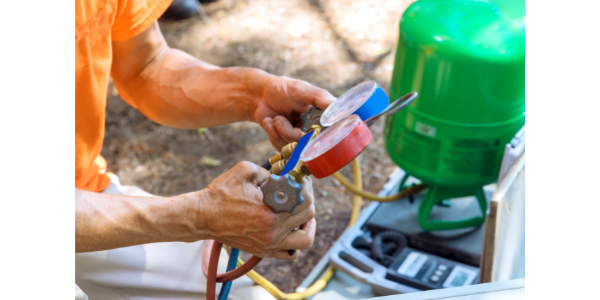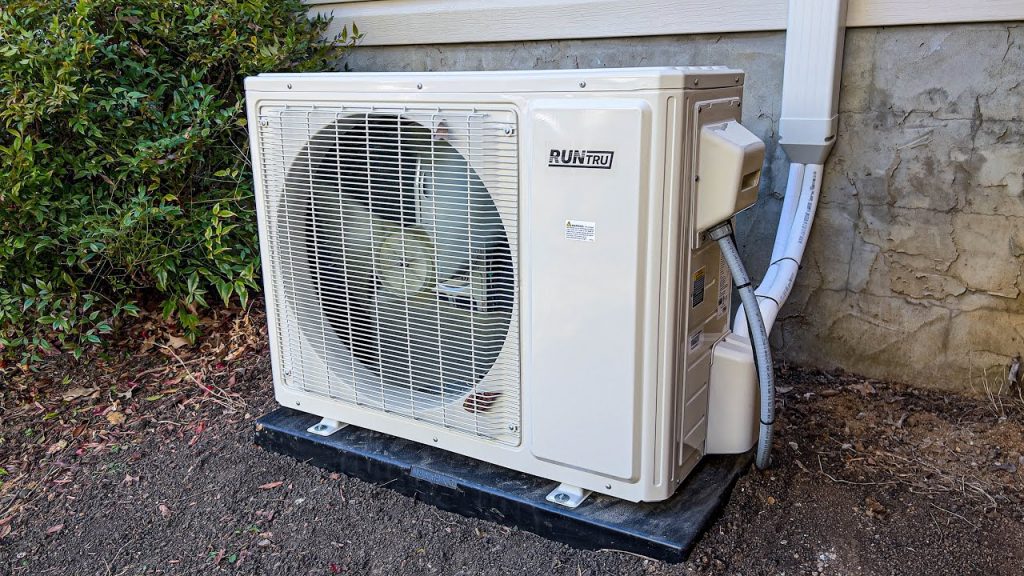The part of the system that relates to the refrigeration cycle when heat is absorbed from a medium is known as an evaporator. The medium in question could be brine solution, glycol, air, or water. This article will concentrate on air. The temperature of the air entering and leaving an evaporator coil, for example, could be 750 F and 550 F, respectively. This gives us a difference of 200 F, or a delta t (temperature differential of the same medium), of 200 F. This is merely a general illustration to demonstrate how heat is removed from the air as it travels over an evaporator coil.
Now that we know how evaporators work, it’s important to realize that freezing of evaporators occurs frequently in some applications, such as low temperature refrigeration, where evaporator temperatures are below freezing, or 0C or 320F. The system is configured with a defrost cycle in certain instances. The defrost cycle is a temperature- or time-triggered procedure that stops the refrigeration cycle. It uses electric heaters or hot gas that has been diverted to melt and remove the ice from the coil. But in this piece, we’ll concentrate on air conditioning systems where a frozen evaporator is actually a concern.
You must keep in mind that the isolated conditions in the evaporator—low pressure and low temperature—will always persist, regardless of the reason of the freeze up. Therefore, when observing the evaporator conditions, a frozen coil will always appear the same, regardless of what is occurring upstream. The end consequence will still be a frozen evaporator, even though these conditions can range from being on the edge of low pressure/temperature to being well below freezing.
The Causes
Let’s go over some well-known or typical causes of evaporator freezing.
Low Charge

Simply put, not enough refrigerant is present to raise the evaporator’s operating pressure. Let’s use 40 degrees Fahrenheit. SST appears to be a widely used abbreviation for saturated suction temperature. No matter what kind of refrigerant is used, if a 400F SST is what you’re aiming for, that’s what you’re aiming for. If our evaporator SST drops below 320F, we risk freezing if we have a system leak or don’t add enough refrigerant when starting up or after a repair.
Yes, we might have superheat, and this extra heat can momentarily raise the coil’s temperature above freezing, but because of the low charge, our system is operating inefficiently, which can result in longer run durations. The combination of these extended operating lengths and a decline in the temperature of the return air creates the ideal conditions for an evaporator to start to freeze. A properly charged system will prevent freezing if everything is operating as it should.
Absence Of Airflow

The evaporator pressure/temperature can be lowered if air flow is reduced, for instance because of a clogged secondary heat exchanger (found in high efficiency furnaces), problems with the duct system, or a broken fan motor. This occurs because the slowly moving air cannot absorb all of the available heat. In plain English, the higher the evaporator pressure/temperature, the more heat needs to be absorbed. The lower the evaporator pressure/temperature, the less heat needs to be absorbed. For this reason, it’s crucial to guarantee that ductwork is appropriately balanced and built. Equally crucial is maintaining the cleanliness of any potential blockages, such as air filters and evaporator coils.
Line Restriction For Liquids

A liquid line filter drier or system metering device is where you’ll typically find a liquid line restriction. For instance, a pressure decrease is typically to blame if a filter drier starts to accumulate system debris and flow is reduced. If the pressure is low enough, the metering device won’t receive a full column of liquid. The pressure decrease will result in a reduced exit pressure at the filter dryer. As a result, the pressure and temperature in the evaporator will be lower than usual. Freezing may happen if the pressure/temperature connection drops below 320F.
There will undoubtedly be an excessive pressure drop if the metering device, which could be a capillary tube, fixed orifice, thermal expansion valve, or these days, an electronic expansion valve, becomes blocked or restricted. A pressure drop through a metering device is entirely natural, but one that occurs outside of the design parameters and adds more restriction than necessary will result in lower evaporator pressure and temperatures than desired. Once more, the coil will begin to create frost or ice if that relationship falls below the freezing point.
Conclusion

Remember that all of the aforementioned circumstances will lead to one result—low evaporator pressure/temperature relationships—and that result can lead to freezing. If that happens, contact an air conditioning technician right away. The service professional is responsible for identifying the reason of the freeze up and fixing it.






GIPHY App Key not set. Please check settings